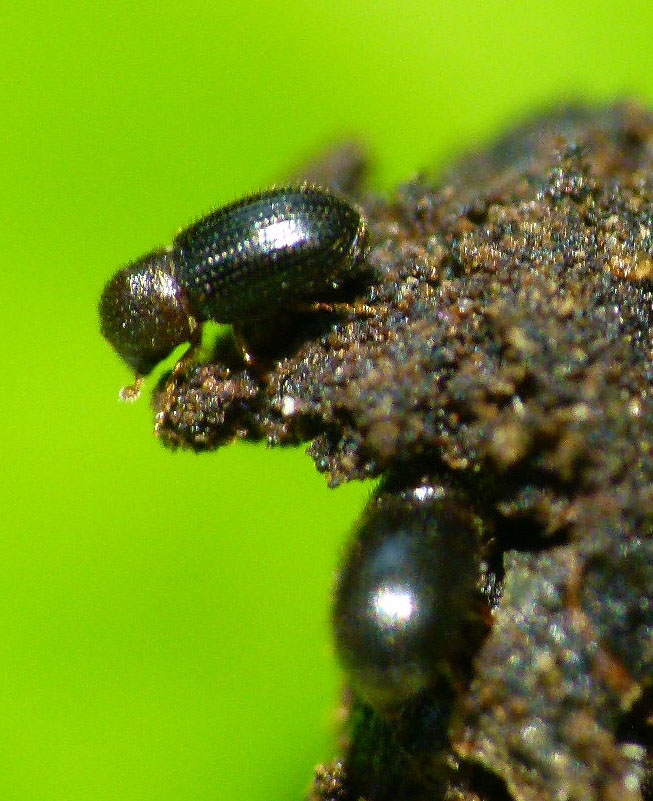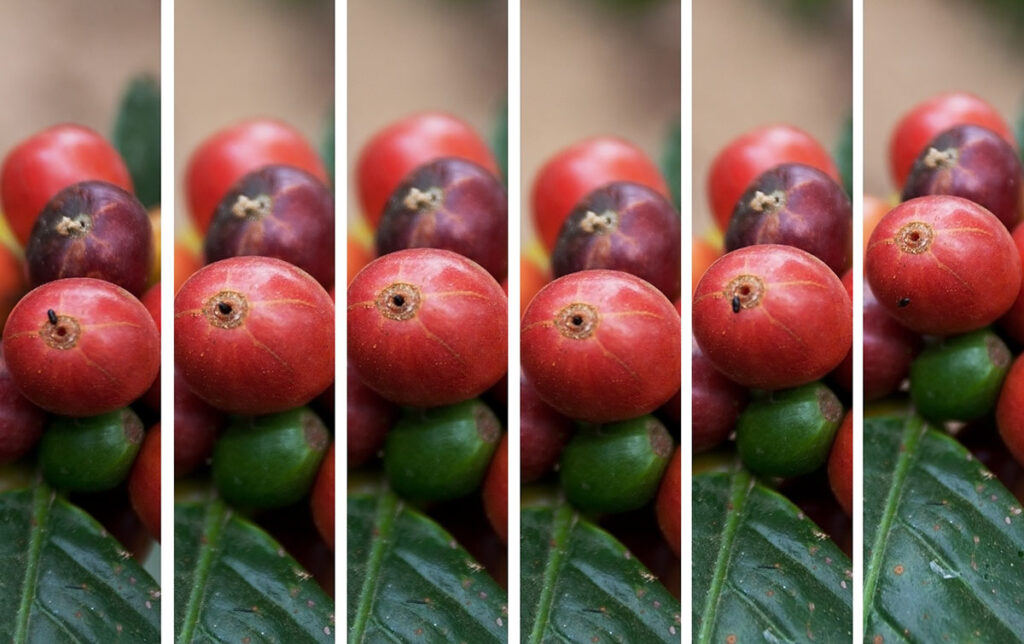The coffee berry borer (Hypothenemus hampei) is a small insect that is considered to be one of the most significant pests of coffee crops worldwide. It is a beetle that feeds on the coffee cherry, causing damage to the coffee beans and reducing the yield of the crop.

The coffee berry borer is a small beetle that is about 1-2 mm in length and is dark brown in colour. It has a cylindrical shape and is covered in fine hairs. The beetle feeds on the coffee cherry by burrowing into the fruit, where it feeds on the coffee bean inside, causing damage to the coffee beans and reducing the yield of the crop. The insect can also infect the coffee tree with a fungus that causes “black leaf” disease which can cause the tree to die. Additionally, the coffee berry borer can also be a vector for other diseases, such as coffee leaf rust.
Preventative measures include, pruning and cleaning the coffee plantation regularly, planting resistant varieties, and using pheromone traps to monitor the presence of the pest. Additionally, biological control methods such as the release of predators and parasites of the coffee berry borer can also be used.
Chemical control methods, such as the use of pesticides, can also be used to control the coffee berry borer, but they can have negative impacts on the environment, and they can also be costly for farmers. Therefore, farmers prefer to use integrated pest management (IPM) methods that combine various techniques to control the pest.

Do you have a term or definition you’d like us to add to the glossary? Let us know using this form.


